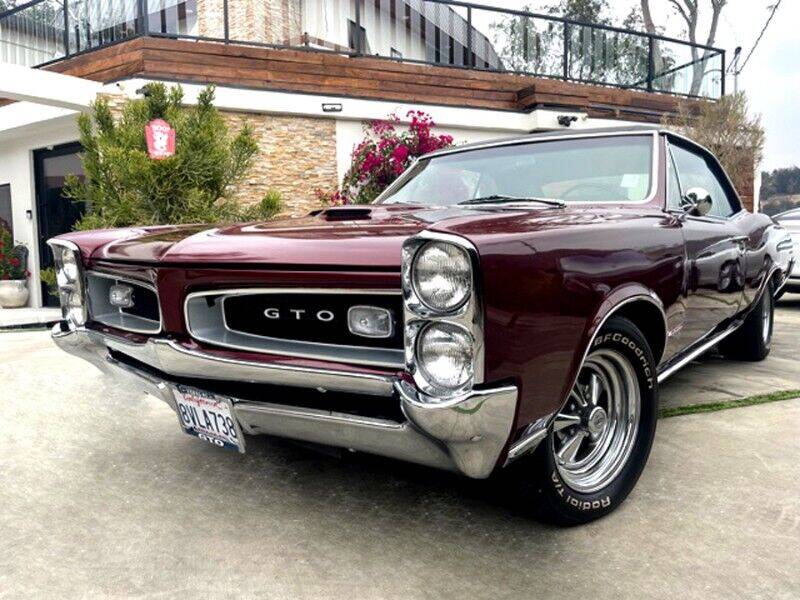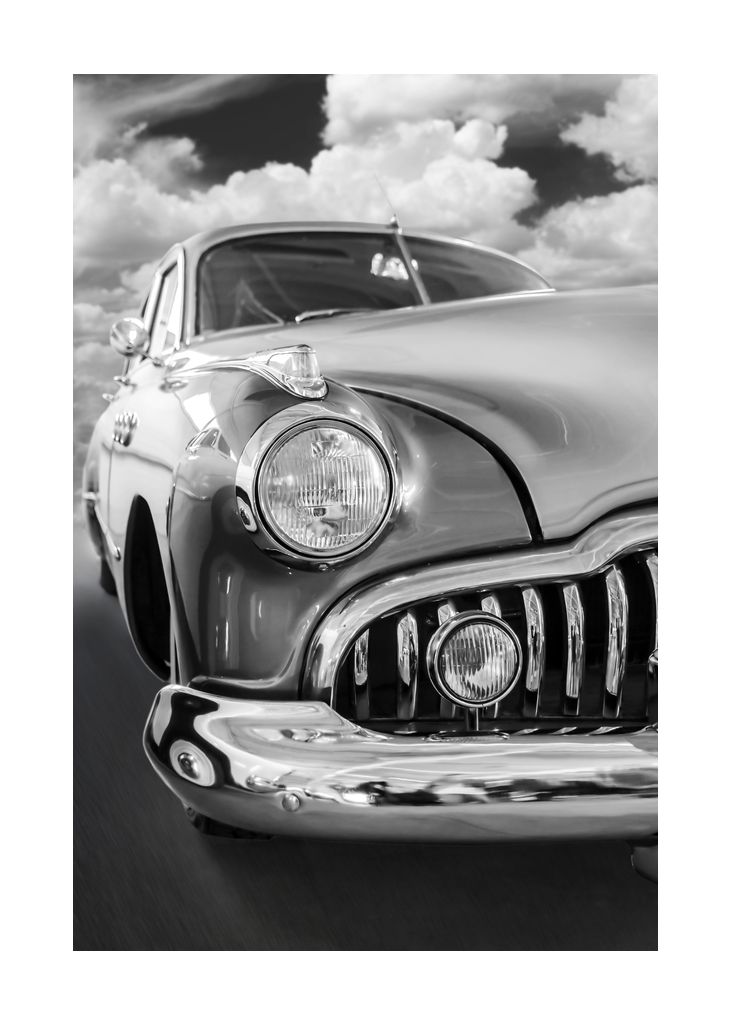
Whitewall tires are a popular choice for modern cars, and have been since the 1950s. The first models had raised white walls, which gave way to a stripe when they were brushed by curbs. This single-colored design, which remains desirable even today, became the benchmark for traditional Hot Rods, Lowiders, and Resto-California cars. These cars were also instrumental in the resurgence in demand for these tires.
Coker tires
The Coker Tire Company is based in Chattanooga, Tennessee, and produces classic whitewall tires. These tires are timeless in design, but made with modern materials. Coker owns the manufacturing rights for several iconic tire brands and its tires are identical to the originals. Coker tires come in many sizes and are perfect for cars of the golden age.

Diamond Back Classics
These modern-day tire manufacturers are well known for making tires that fit vintage cars, hot rods, and classic cars. Diamond Back Tires is the largest producer of whitewall tires, and their products are suitable for classic and hot-rodding vehicles. The company has been operating for more than thirty years. The legitimacy of these tires may be questioned by some, but the company's products can be used for both modern and classic cars.
Diamond Line
Modern cars may have whitewall tires that you are unsure how to clean. Whitewall tires can be difficult to clean. Whitewall tires can be affected by chemicals found in black rubber. It is possible to stack two tires with different sidewalls. This stain is impossible to remove with even the most powerful cleaning agents. To get the whitewalls removed, you may need to go to a professional auto shop.
Blue Line
The process of creating a modern vehicle with blue line whitewalls tires is not as straightforward as it seems. The task is only being pursued by a handful of major tire manufacturers. Special care is required when handling these tires due to their greater visual defects. Vogue Tyre, the company that developed the whitewall tire, explains the process, from storage to stacking and handling. Mounting a blue line whitewall car is not difficult.

Cadillac
Wide whitewall tires are a sign that quality is being maintained, even though they are not as common in modern cars. The wide whitewall tires on Cadillacs were first used in the early 1960s. These cars were typically decorated with whitewall tires one-inch wide and had double or three stripes. Today, Cadillac is the only major luxury car manufacturer that still offers wide whitewall tires for certain models. Cadillac's website provides more details.
FAQ
How do I prepare to be a mechanic apprentice?
It is essential to understand what you are getting into. You need to understand the mechanics of cars and how they work. This will allow you to be prepared for your first day at work.
You will also need to learn how to fix simple problems like tires and broken lights.
This article will show you how to diagnose and fix issues.
You'll also need to know how different parts fit together to put them back together again.
And finally, you must know how to use tools safely and efficiently.
All these aspects will help you become a competent technician.
How long is an automotive course?
A course in automotive lasts three years.
The first year focuses on theory and learning about cars. The second year is dedicated to practical training, where you will learn how to fix cars, drive them, and do other jobs around the car. The final year includes a placement at an auto shop. This gives you real-world experience fixing real problems.
What do I need to know about car mechanics?
You don't need to know anything about cars to work as an auto mechanic. It's enough to know how to fix things. That's why most people start doing jobs like fitting brake pads or changing tires before progressing to more complex repairs.
You'll need the ability to read and understand diagrams and to follow simple rules of good practise. Also, you will need to know how to tell if parts require replacing or repair.
It is important to understand that vehicle repairs should only be attempted by those who have received the proper training. This is especially important if you work with expensive parts such as transmissions or engines.
Even though you don't need to be an expert on cars, it is important to understand the fundamentals of mechanical engineering and physical physics. This is how you understand the mechanisms behind engines and brakes.
It is important to realize that you must be ready for all types of situations. One example is when you could be working on a vehicle involved in a serious crash. You'll also need experience dealing with breakdowns and accidents.
Finally, you need to be willing and able to quickly learn new skills. As well as being able to diagnose problems, you'll need to be able to perform simple maintenance tasks such as tightening nuts and bolts.
What is the difference between an automotive technician and a mechanic?
The two are similar but not identical. A mechanic repairs cars and an automotive technician performs maintenance.
A mechanic should be able to do simple tasks quickly and have good manual dexterity. A mechanic must be able diagnose and fix problems quickly and accurately.
An automotive technician must be more technically proficient than a mechanic. They should be able read blueprints and use tools like drills and wrenches.
They must be able and competent to safely perform complicated procedures. They must also be familiar with different types of engines and electrical systems.
They must also be able comprehend how the various parts interrelate with one another.
The result is that a mechanic often earns less than an auto technician. There are many job opportunities in both.
Statistics
- The U.S. Bureau of Labor Statistics (BLS) reports that the job outlook for automotive service technicians and mechanics is expected to decline by 4% from 2019 to 2029. (indeed.com)
- According to the BLS, the median annual salary for automotive service technicians and mechanics in the United States was $44,050 in May 2020. (uti.edu)
- There were 749,900 jobs available for automotive service technicians and mechanics in 2016, which is expected to grow by six percent through 2026. (jobhero.com)
External Links
How To
How to properly diagnose your vehicle for repair
To determine if your car needs repairs, you should first look at the symptoms that your car presents. These steps will help you diagnose your car properly.
-
Check engine lights. Inspect the dashboard light indicators. These include the engine lights, the oil pressure gauge and the battery light indicators. The RPM gauge and coolant temperature gauge should also be checked. You may have a problem with your vehicle if any of the indicators are flashing for more than a few days.
-
Take a look at the treads. Tires that are worn can cause issues with handling and braking. You should also inspect the wheel treads. You should ensure that they are clean and smooth. This can be done by removing the wheels from the vehicle and taking them off. Use a flashlight to see how well the treads are worn.
-
Check the level of brake fluid. You must always monitor the level of your brake fluid. This ensures that your brakes work properly. Low brake fluid levels could cause your brakes to fail when you apply pressure.
-
You should test the suspension system. It is common for vehicles to have a suspension system which absorbs shocks or vibrations. It allows for better control, smooth acceleration, and deceleration. If your vehicle has a suspension problem, it might feel wobbly or shake uncontrollably. You can test if your vehicle has a suspension problem by putting weight on either the front or back axle to see how it moves.
-
Examine your steering column. The steering column connects the steering wheel to all other components of the vehicle. Accidents often damage steering columns. You should replace the steering column if it is loose or weak.
-
The exhaust pipe should be observed. The exhaust pipe helps move gases from a combustion chamber into the atmosphere. Exhaust pipes that are cracked or leaking can allow harmful fumes to enter your cabin. You should also fix any bent tailpipes immediately.
-
Take a look at the underside of your hood. Look underneath your hood to see if anything looks strange. Fluids could be leaking from your engine. In addition, if you notice an unusual smell coming from your engine compartment, you should contact a professional technician.
-
Check the air filter. Your vehicle's air filter collects dust and debris from the outside environment. A dirty filter can lead to a poor vehicle's performance. Replace your air filter regularly.
-
Check the fan belt. Your vehicle's fanbel connects the engine and transmission. If it breaks, the engine won't turn over. It is very easy to replace your belt. You will need a screwdriver, pliers and a pair of pliers.
-
The radiator hose and hoses should be checked. The radiator hose carries water from the radiator to the engine. It can crack or become damaged and leak hot liquid onto an engine. To repair the leaky hose, all you need is a pair if needle-nosepliers.
-
Make sure you have the windshield wipers checked. Windshield wipers work by using electricity to remove rain and snow. They can leave streaks on your windows glass if they stop working. You can fix the problem by changing the washer fluid.
-
You should inspect the cables. Batteries provide power to electrical systems inside your car. If you are replacing batteries, disconnect the negative cord first. Failure to do so can damage your alternator.
-
You should check the headlights. The headlights will illuminate the road ahead. It can lead to poor visibility if they aren't working properly. To determine if your bulbs are out of date, check them.
-
Always check your lights. The lights are there to warn other drivers if they approach you at night. It could cause distraction and even lead to an accident if it doesn't work.
-
You should inspect your brakes. Before you get in a car accident, your brakes will be slowing down your vehicle. You could lose control of the car and cause a crash if they don't work properly.
-
Change the oil. Keep your engine lubricated with oil. It prevents metal parts from rusting too quickly. It is recommended to change the oil once a month.